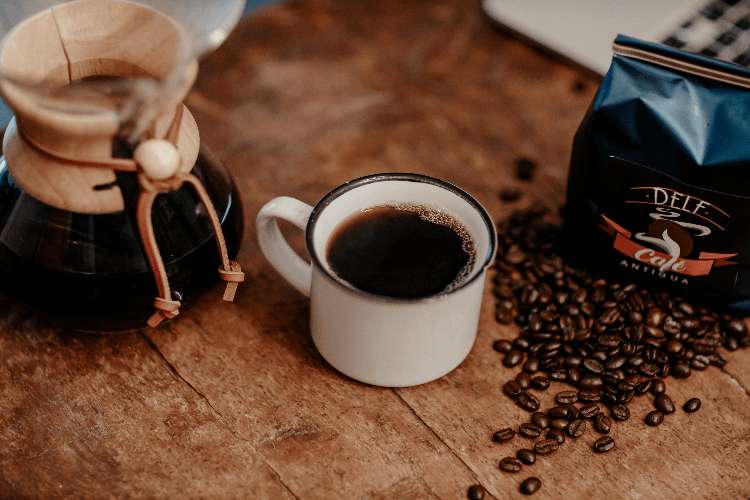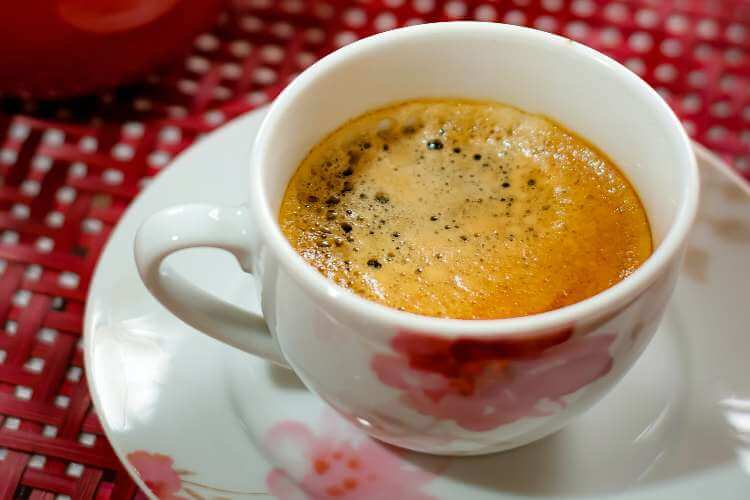
When it comes to caffeine, there is a lot of misinformation out there. How much caffeine in a cup of coffee? Is decaf really caffeine-free? What about energy drinks? This article will set the record straight and give you a detailed guide to caffeine. After Reading this article you will know How much caffeine in a cup of coffee.
Caffeine is a central nervous system stimulant and is the world’s most consumed psychoactive drug. According to the Mayo Clinic, most healthy adults can safely consume up to 400 milligrams of caffeine daily. But what does that actually look like in terms of your favorite beverages? Keep reading to find out.
Caffeine has many benefits – dehydration prevention, fatigue, and headaches treatment, improving performance in extreme sports, fitness, and workouts, drinking coffee before your activity is believed to increase the energy your body will produce. You may have heard someone say, “I need my coffee this morning just to stay awake,” meaning they won’t function without caffeine. But how much caffeine is in a cup of coffee?

It is common knowledge that coffee is the most consumed caffeinated drink in the world, but how much caffeine are we drinking when we have one cup of coffee? How much caffeine is too much? Everyone’s different, and there are a lot of factors that can affect how your body reacts to coffee. Do you need more energy or feel like you cannot live without your morning coffee fix? A brief guide to show you how much caffeine is in a cup of coffee.
Is Caffeine addictive and socially acceptable in many food items and drinks
Caffeine is an addictive substance found in many food items and drinks. It is socially acceptable to consume caffeine, and it is often used as a way to stay awake and alert. Caffeine can have positive and negative effects on the body, and it is essential to be aware of how much caffeine you consume.
Caffeine is a stimulant that affects the central nervous system. It can increase alertness, heart rate, and blood pressure. Caffeine can also lead to sleeplessness, anxiety, and irritability. Some people may experience withdrawal symptoms if they stop consuming caffeine suddenly.
Caffeine is found in coffee, tea, energy drinks, soda, chocolate, and over-the-counter medications. The amount of caffeine in a cup of coffee can vary depending on the type of bean, the brewing method, and the cup size. A typical cup of coffee contains 95-200 mg of caffeine.
It can be beneficial when it gives you the energy to keep going or reduce your level of fatigue.
Caffeine can be a lifesaver when you’re looking for an afternoon pick-me-up or struggling to get through your workday. This stimulant is found in coffee, tea, sodas, and energy drinks. Caffeine works by blocking adenosine, a neurotransmitter that makes you feel sleepy. It also increases the release of dopamine and norepinephrine, which can improve your mood and make you feel more alert.
While caffeine has many benefits, it’s essential to be aware of how much you’re consuming. Too much caffeine can lead to jitters, anxiety, and insomnia. It can also worsen gastrointestinal issues like heartburn and irritable bowel syndrome. Pregnant women and people with certain medical conditions should also limit caffeine intake.
The caffeine content of coffee varies depending on the type of bean, the brewing method, and the time the coffee is brewed. For example, Arabica beans contain less caffeine than Robusta beans. Black coffee generally has more caffeine than coffee with milk or cream. And espresso contains more caffeine per serving than regular drip coffee. Here is some measurement where you can know How much caffeine in a cup of coffee.
Brewed coffee: 95-200 mg
Espresso: 63 mg
Decaf coffee: 2-12 mg
Coffee with milk or cream: 60-120 mg
Tea: 14-60 mg
Green tea: 24-40 mg
However, the caffeine in your drink may carry some unhelpful side effects, such as insomnia, headache, anxiety, and depression.
While a cup of coffee in the morning can help wake you up and improve your focus, the caffeine in your drink may also cause unwanted side effects. These can include insomnia, headache, anxiety, and depression. If you find yourself experiencing any of these after drinking coffee, it’s best to cut back on your intake or switch to decaf.
However, the caffeine in your drink may carry some unhelpful side effects, such as insomnia, headache, anxiety, and depression. While these side effects are typically mild and resolve independently, it’s essential to be aware of them. If you experience these side effects after drinking caffeine, reducing your intake or stopping caffeinated beverages altogether is best.
Regular intake of caffeine contributes to daily bowel dysfunction
Caffeine is a stimulant that can speed up the digestive process and cause diarrhea. It can also irritate the lining of the intestines, leading to cramping and abdominal pain. While a cup of coffee or tea may not be enough to cause these symptoms in everyone, those who are sensitive to caffeine may experience them after just one cup. If you regularly drink caffeinated beverages and find that you’re having difficulty with your bowel movements, it’s worth cutting back on your intake to see if it makes a difference.
Caffeine is a stimulant that can have positive and negative effects on the body. For some people, caffeine can help increase energy levels and focus. However, for others, caffeine can cause anxiety, jitters, and trouble sleeping. One of the less-talked-about side effects of caffeine is that it can contribute to daily bowel dysfunction.
For those who are prone to constipation, caffeine can make things worse. Caffeine promotes gastrointestinal motility, which means it can speed up the movement of food through the digestive system. This can lead to diarrhea and abdominal discomfort. Additionally, caffeine is a diuretic, which helps the body get rid of excess fluid. This can lead to dehydration, which can further contribute to constipation.
If you regularly consume caffeinated beverages and suffer from bowel dysfunction, it may be worthwhile to cut back on your intake or switch to decaffeinated options. It would help if you also stayed hydrated by drinking plenty of water throughout the day.
Additionally, caffeine increases calcium loss from bones and aggravates asthma symptoms.
Caffeine has been shown to increase bone calcium loss and aggravate asthma symptoms. While the exact mechanisms are not fully understood, caffeine may interfere with calcium absorption in the gut and/or increase calcium excretion in the urine. Caffeine may also stimulate the release of histamine from cells, which can worsen asthma symptoms.

Caffeine has been shown to increase bone calcium loss, which can lead to osteoporosis. Additionally, caffeine can aggravate asthma symptoms by narrowing the airways and increasing bronchial constriction.
Caffeine has been shown to increase bone calcium loss and aggravate asthma symptoms. A cup of coffee contains about 95 mg of caffeine, and a typical serving size of coffee is about 8 ounces. This means a cup of coffee has about 12 mg of caffeine per ounce.
Ultimately, limit your caffeine
Ultimately, limit your caffeine intake to 400 mg per day. This is about four cups of coffee. If you’re pregnant, limit your information to 200 mg per day. If you have anxiety or sleep disorders, limit your caffeine intake to 200 mg daily.
Caffeine is a drug, and like all drugs, it has potential side effects. Too much caffeine can cause jitters, anxiety, and even heart palpitations. You may want to limit your intake if you’re sensitive to caffeine.
It’s also important to remember that not all coffees are created equal. Some coffee beans have more caffeine than others, so pay attention to the label when buying coffee. If you’re brewing your coffee at home, consider using decaf beans or brewed coffee.
Ultimately, limit your caffeine intake if you’re sensitive to the drug or want to avoid potential side effects. Pay attention to how much caffeine is in your coffee, and don’t hesitate to switch to decaf if necessary.
The different types of coffee beans
There are a few different types of coffee beans: Arabica, Robusta, Liberica, Excelsa, and Typica.
Arabica beans are the most popular type of coffee bean. They’re grown in Central and South America, Ethiopia, and Brazil. Arabica beans have a milder flavor and less caffeine than Robusta beans.
Robusta beans are grown in Africa, Indonesia, Vietnam, and India. They have a bolder flavor and more caffeine than Arabica beans.
Liberica beans are grown in the African countries of Liberia, Ivory Coast, Cameroon, and Ghana. They have a fruity flavor with cherry and chocolate notes. Caffeine levels in Liberica beans are higher than in Arabica beans.
Excelsa beans are grown in Thailand, Cambodia, Laos, and Vietnam. They have a floral flavor with hints of jasmine and citrus. Excelsa beans have less caffeine than Robusta beans.
Typically beans are the original coffee bean variety. They’re grown in Ethiopia, Yemen, India, Sri Lanka, Jamaica, Costa Rica, Panama, Nicaragua, Guatemala, Honduras, El Salvador, Venezuela, Colombia, Ecuador, Peru, Bolivia, Chile, Argentina, Uruguay, Paraguay, and Brazil. Typically beans have a balanced flavor with hints of chocolate and nuts.
How much caffeine in a cup of coffee?
A cup of coffee contains 95-200mg of caffeine. The amount of caffeine in a cup of coffee depends on the type of bean, the brewing method, and the cup size.
dark roast: 95mg
medium roast: 135mg
light roast: 160mg
decaf: 2-12mg
espresso: 40-80mg
Assuming you’re drinking a standard-sized cup of coffee (8oz), here’s a breakdown of how much caffeine is in each type of bean using the most popular brewing methods:
dark roast brewed at home: 95mg
Starbucks dark roast poured over ice: 90mg iced Starbucks blonde roasted coffee: 120mg Dunkin’ Donuts dark roast: 130mg Folgers classic instant roast coffee made with water: 65mg Nespresso capsule espresso shot: 75mg.
As you can see, the amount of caffeine in a cup of coffee can vary greatly depending on the type of bean, brewing method, and size of the cup. If you’re sensitive to caffeine or want to avoid it altogether, opt for decaf or an espresso made with decaf beans.
The different brewing methods and their caffeine levels
Several brewing methods are used to make coffee, each resulting in a different caffeine level. The most popular brewing methods are drip, French press, and espresso.
Drip coffee makers brew coffee by slowly dripping hot water over ground coffee beans. Depending on the machine’s size and the beans’ grind, drip coffee can have anywhere from 50-100mg of caffeine per 8oz cup.
French press coffee steers grounds in hot water for a few minutes before pressing the plunger to filter the dirt. This method usually results in a more robust cup of coffee with more caffeine – anywhere from 80-100mg per 8oz cup.
Espresso forces hot water through tightly packed grounds at high pressure. A single shot of espresso contains about 64mg of caffeine, but most people order drinks that contain 2 or 3 photos. Therefore, an espresso-based drink can have up to 192mg of caffeine.
The effect of additives on caffeine levels
When it comes to caffeine, there are a few things that can affect its levels. One of those things is additives.
Additives can include anything from milk and sugar to flavorings and syrups. And while they might not seem like they would significantly impact caffeine levels, they can make a difference.
For example, adding milk to your coffee can reduce the amount of caffeine absorbed into your body. That’s because the fats in milk bind to the caffeine and slow its absorption.
Sugar can also have an effect on caffeine levels. Adding sugar to your coffee will increase the time it takes for your body to absorb the caffeine. That’s because sugar slows down the movement of caffeine through your digestive system.
And finally, flavorings and syrups can also impact how much caffeine in a coffee you get from your coffee. That’s because these additives can change how your body processes caffeine. So if you’re looking for a strong cup of coffee, it’s best to stick with black coffee or add only a small amount of additive.

Conclusion
So, how much caffeine in a cup of coffee? Depending on the type of coffee and the brewing method, it can range from around 95mg to over 500mg. However, on average, most cups of coffee contain between 95mg and 200mg of caffeine. While this may seem like a lot, it’s important to remember that everyone metabolizes caffeine differently. So, while one person may drink several cups of coffee without feeling any adverse effects, another person may only be able to handle one or two before feeling jittery or anxious. You can do a few things if you want to reduce your caffeine intake. For example, you can switch to decaf coffee or tea or opt for herbal infusions. You can also experiment with different brewing methods to see if they affect how much caffeine in a cup of coffee.



